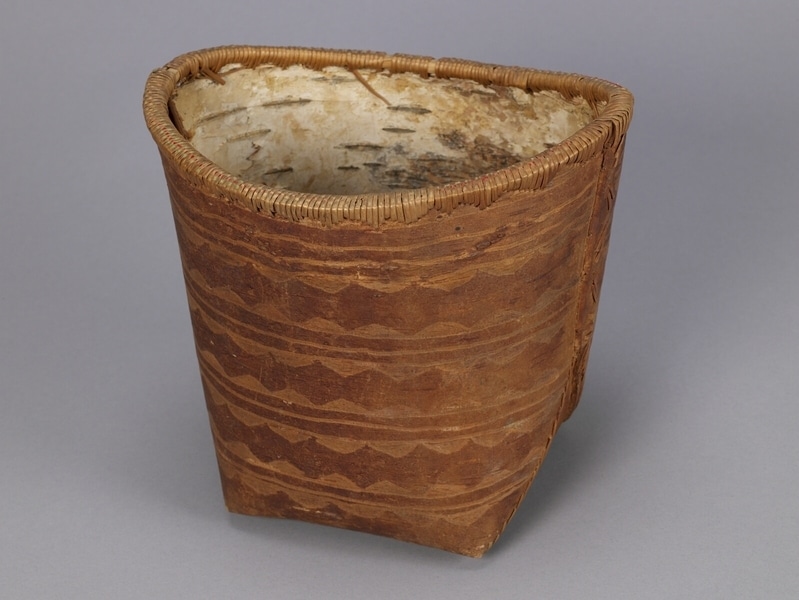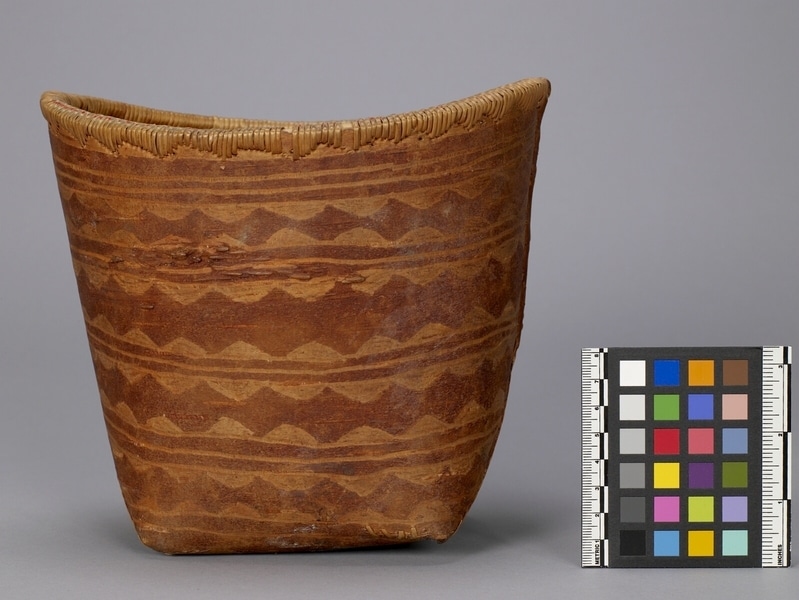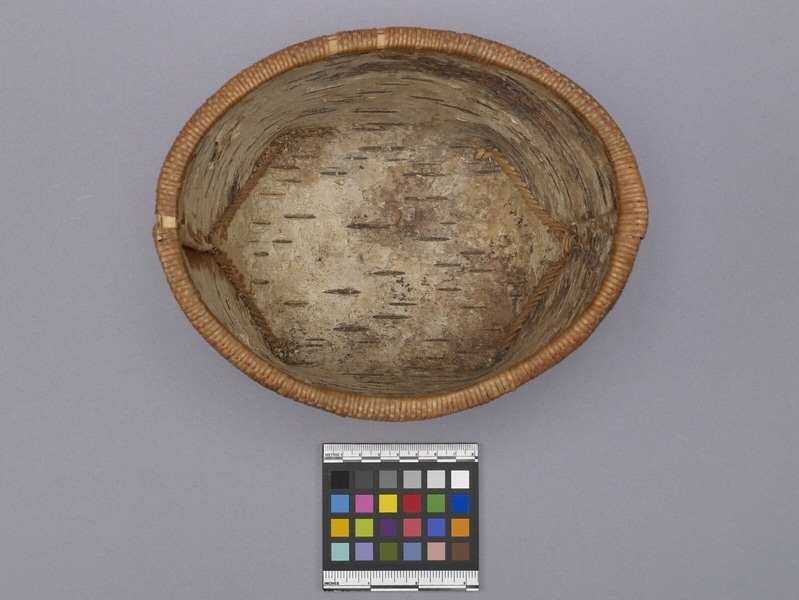Basket Item Number: Na1163 from the MOA: University of British Columbia



Description
Basket with oval mouth that tapers to a square base. Spruce root (?) is used to stitch the bark together and to finish the rim by lashing a reinforcing strip of wood to the upper edge using a series of repeatedly increasing and decreasing lengths of stitch (up to 1 cm) to form a jagged pattern. A scraping technique is used to decorate the basket in horizontal bands of light and dark. Pattern consists of three dark horizontal bands at the top followed by a repetition of a wider band saw-toothed on both upper and lower edges and two narrow horizontal bands; this is repeated four times. The decoration does not quite match on both sides (on one side, the last two horizontal bands do not appear). The top of the rim has the remains of a red thread flanked on both sides by a green thread that was woven into the spruce stitching.
History Of Use
Basketry filled a vital need as containers for storage domestic use and transportation of goods. Some had multiple uses; others were made for specific functions. After European contact, used for trade and sale items. Forms have been altered to meet European tastes. Basketry making was and is a women's art.
Specific Techniques
Birch bark was cut to size, steamed, folded and sewn at corners. Wood rim is lashed with spruce root, outside scraped to decorate.
Cultural Context
domestic storage; cooking; transport
Item History
- Made in British Columbia, Canada
- Collected in Port Simpson, British Columbia, Canada and Lax Kw'alaams, British Columbia, Canada between 1887 and 1966
- Owned by Agnes Macintosh Brentzen
- Owned by Margaret E. Cornish and E. Percival before November 5, 1987
- Received from Margaret E. Cornish (Seller), Museum of Anthropology Shop Volunteers (Funding source) and E. Percival (Seller) on November 5, 1987
What
- Name
- Basket
- Identification Number
- Na1163
- Type of Item
- basket
- Material
- birch bark, wool fibre ?, wood and spruce root
- Manufacturing Technique
- cut, scraped, folded, lashed, stitched, dyed and steamed
- Overall
- height 18.7 cm, diameter 20.7 cm
Who
- Culture
- Gitxsan ?
- Previous Owner
- Agnes Macintosh Brentzen, Margaret E. Cornish and E. Percival
- Received from
- Margaret E. Cornish (Seller), Museum of Anthropology Shop Volunteers (Funding source) and E. Percival (Seller)
Where
- Holding Institution
- MOA: University of British Columbia
- Made in
- British Columbia, Canada
- Collected in
- Port Simpson, British Columbia, Canada and Lax Kw'alaams, British Columbia, Canada
When
- Collection Date
- between 1887 and 1966
- Ownership Date
- before November 5, 1987
- Acquisition Date
- on November 5, 1987
Other
- Item Classes
- basketry
- Condition
- good
- Current Location
- Case 19
- Accession Number
- 1253/0004